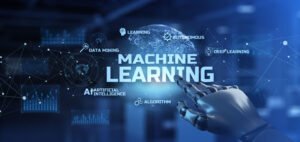Artificial Intelligence has indeed been one of the more revolutionary technologies in healthcare. With machine learning, advanced data analysis, and algorithms, AI has made possible the revolutionizing of the way diagnostics can be done, treatment plans can be optimized, operational inefficiencies reduced, and patient care personalized. So how is artificial intelligence changing the diagnosis and treatment process, and what does it mean for health care in the future?
Artificial Intelligence and Super Accuracy in Diagnosis
Accurate diagnosis is the basis of effective health care. Conventional diagnostic techniques are sometimes liable to human error, delay, and the misinterpretation of complex data. AI has proven to have massive potential in sharpening the accuracy and speed of diagnosis, eradicating diagnostic errors, and bringing about diseases sooner.
Medical Imaging and Pattern Recognition: Medical imaging with AI in health will be more pronounced in future. X-rays, MRIs, CT scans, and other elements may be detected through AI algorithms. So, some abnormalities like tumors, fractures, or blockages can be identified precisely. For example, in radiology, AI has shown the potential of detecting early-stage cancers, such as breast and lung cancers even more sensitively than human radiologists. This is because with large databases of images, AI may identify patterns and anomalies that may be invisible to the human eye.
Pathology and Genomic Data Analysis: AI is also changing pathology through assisting in the analytics of biopsy samples and genomic data. Algorithms in identifying cancer, for instance, could scan massive amounts of genetic information for specific mutations and molecular patterns so that a more accurate cure could be decided. In tissue sample slides, AI tools can now interpret these, detect latent signs of diseases, and give real-time insights to pathologists.
Early disease detection is probably the most promising application of AI. It allows the identification of diseases at a time when they are at their most treatable. Use cardiovascular disease as an example. There are artificial intelligence algorithms that have already been designed to screen people against cardiovascular disease through heart rate patterns, blood pressure data, and other factors for risk. Similarly, AI-powered wearables and mobile apps can monitor vital signs continuously and detect anomalies in real time, thus potentially saving lives and triggering early intervention.
AI-Powered Personalized Treatment Plans
AI changes the process of diagnosis and aids in more customized treatments through the employment of data that is custom made on individual patients. Precision medicine replaced all generalized treatments since AI primarily assumes the center role of analyzing individual patient-specific data, which tailors a treatment to specific requirements.
Precision Medicine and AI: With EHRs, genetic profiles, lifestyle factors, and even social determinants of health, AI can predict how a patient will probably respond to treatment. This affords clinicians the power to design increasingly personalized treatments that might have fewer adverse effects, ultimately enhancing patient results. For instance, oncologists can utilize AI to help them determine the most appropriate chemotherapy regimen for patients suffering from cancer based on how their cancer’s molecular characteristics are defined. Cancer treatment is no longer a purely trial-and-error practice but based on molecular characteristics of the tumors.
AI in Drug Development: AI also plays a highly important role in the creation of a new drug and therapy. By analyzing biological data, AI systems can simulate the probable effects of potential drug compounds, which could lead to the speedier discovery of drugs, from what might take years and tens of billions of dollars to develop a new drug. This has especially been visible in the development of disease treatment, particularly for diseases like Alzheimer’s, where the identification of new intervention targets and pathways already becomes possible with AI.
Predictive Analytics in Treatment AI can scan patient data with regard to the rate at which a disease may progress or how a patient will react when exposed to particular treatments. This is very achievable in chronic conditions such as diabetes or heart conditions. For example, through algorithms, AI can analyze historical health data to forecast future complications and therefore enable proactive management. This makes the patient have better outcomes while reducing the cost of treatment since hospitalization and emergency interventions are prevented.
Optimizing Clinical Workflows and Reducing Costs
AI is also used for optimizing clinical workflow, eliminating inefficiencies, and reducing healthcare costs within healthcare systems. It allows health professionals to care for more patients instead of carrying out administrative work and procedure processes through automation and streamlining.
Automation of routine work: AI can automate most routine work in healthcare-related activities such as data entry, scheduling appointments, or billing example. This minimizes the role of clerical tasks on the part of health care personnel and lessens the likelihood of errors. In this context, AI could potentially allow chatbots to take care of simple patient queries, schedule appointments, or dispense information on medicines or treatments. In this way, health care personnel will have more time and resources to spend directly on patient care.
AI in Surgery: AI robots are increasingly being used in surgical procedures to assist surgeons in complex operations. Such robots can perform very precise movements, thus increasing the chance of fewer complications and better surgical outcomes. AI can be applied to surgical systems, which can process real-time data during procedures to help the surgeon make better-informed decisions.
Predictive Analytics for Resource Management: AI is used in hospitals to predict the volumes that patients will come in and manage the resources within them more effectively. With the help of historical data as well as real-time inputs, AI algorithm can predict how many patients would admit bed occupied rates and even the probability of equipment shortages and thereby enables hospitals to allocate resources more effectively for reducing some of the waiting times, improving patient satisfaction, and optimizing operational costs.
AI and Remote Healthcare Solutions
In fact, with this new wave of telemedicine and teleservice, AI is now significantly contributing to enhancements in healthcare service delivery outside the clinic.
Virtual Health Assistants: AI-powered virtual health assistants are increasingly being used to monitor patients remotely, answer medical questions, and make recommendations. They can analyze one’s symptoms, guide one through treatment plans, and even alert health providers in case of emergencies. This level of individualized, round-the-clock care fosters patient engagement and controls chronic diseases.
Artificial Intelligence in Remote Monitoring: With wearables that can recognize AI, every patient who needs remote monitoring is given a resource. Such a tracking device can detect all manner of vital signs at all times. If an irregularity is detected, the patient and healthcare providers can get instant feedback. For instance, AI in wearable technology will track the blood sugar levels of diabetic patients. Others include the detection of arrhythmias in patients suffering from heart disease or the analysis of the sleep pattern of patients with sleep disorders.
Conclusion
AI transforms healthcare diagnostics accuracy, individualized treatment plans, optimization of clinical workflows, and access to remote health services. Outcomes with AI, therefore, indicate better patients at reduced healthcare costs and more resource use. The future healthcare landscape, therefore, seems to be heavily dominated by AI and the transformative already being felt in changes undergone by the sector under its influence.









